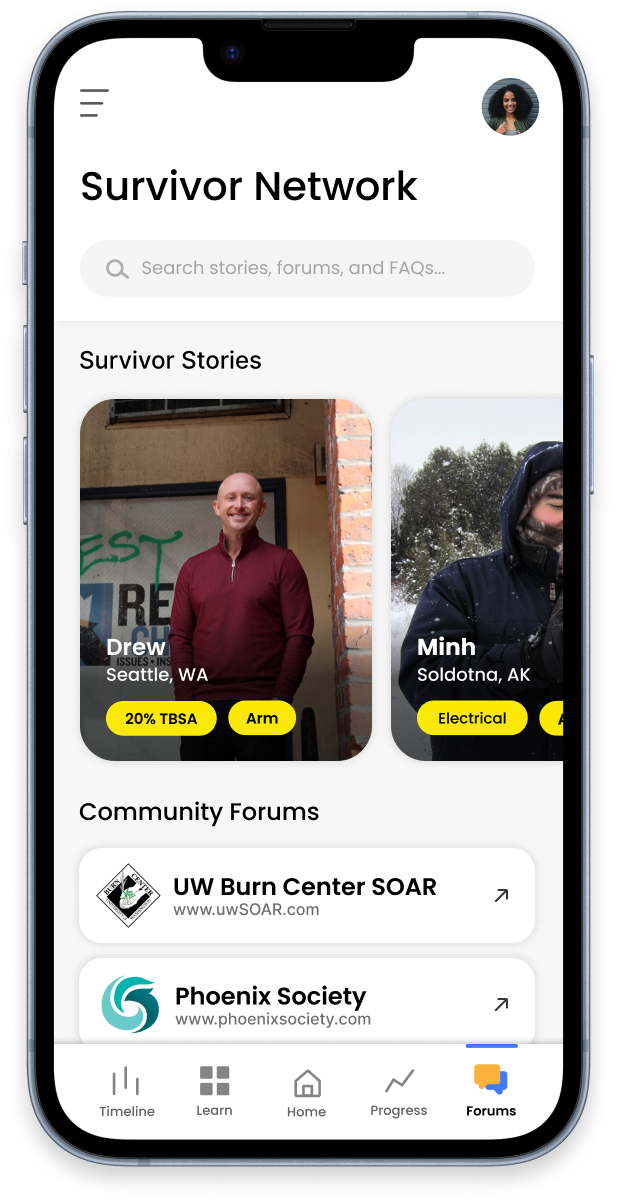BurnCORE is a burn care and recovery mobile app that optimizes outpatient recovery experiences. I joined the UW Medicine Regional Burn Center to research and design BurnCORE’s user experience.
-UX Designer & Researcher on a multidisciplinary team
-Plan, conduct, and analyze user interviews
-UI Design and prototyping
-Development of MVP for grant application
-Prototype presented at American Burn Association Conference
-Research submitted to Journal of Burn Care & Research
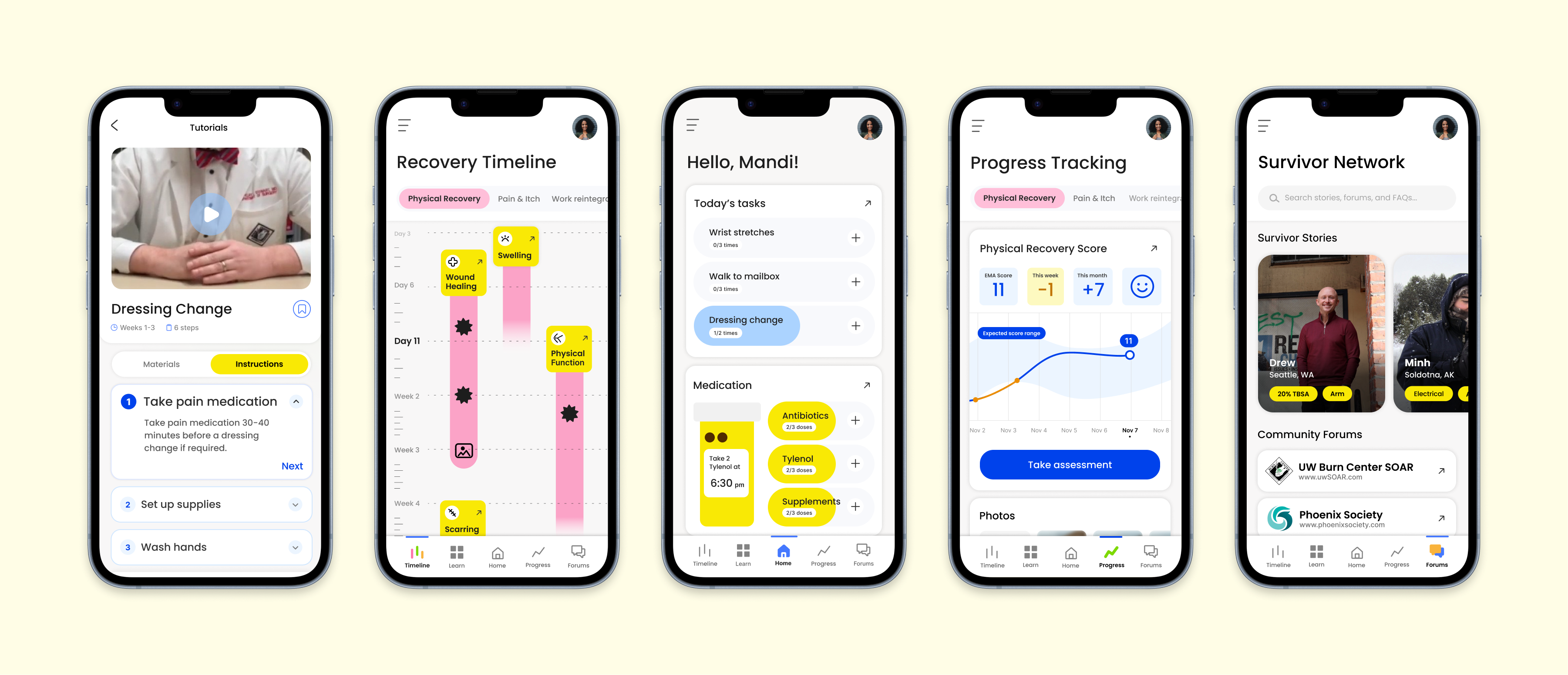
BurnCORE started as an idea from a burn survivor who wished he’d been better prepared for the challenges that come with burn recovery.
He echoed what countless survivors had expressed at the University of Washington Regional Burn Center. Burns are rare but life-threatening injuries, and survivors encounter unexpected, daunting challenges. Although resources exist to aid in outpatient recovery, they are often geared towards clinicians and are difficult to comprehend.
So, the Burn Center launched an effort to develop a mobile app to optimize outpatient recovery: BurnCORE. I joined a team of two surgeons and the aforementioned burn survivor to lead the user research and UX design of the app.
We needed to understand how burn survivors currently experience recovery to identify opportunities for intervention.
From prior research, we knew that people with burn injuries experience challenges in multiple domains including wound and scar care, pain and itch, psychosocial recovery, return-to-work, and community re-integration. What we didn’t know was what these challenges looked like in daily life, how patients handled them, or how we could mitigate them with BurnCORE.
So with these unknowns known, I developed a plan with robust ethnographic research and co-design phases to gain a holistic view of the recovery experience and collaborate directly with patients when prototyping the app.
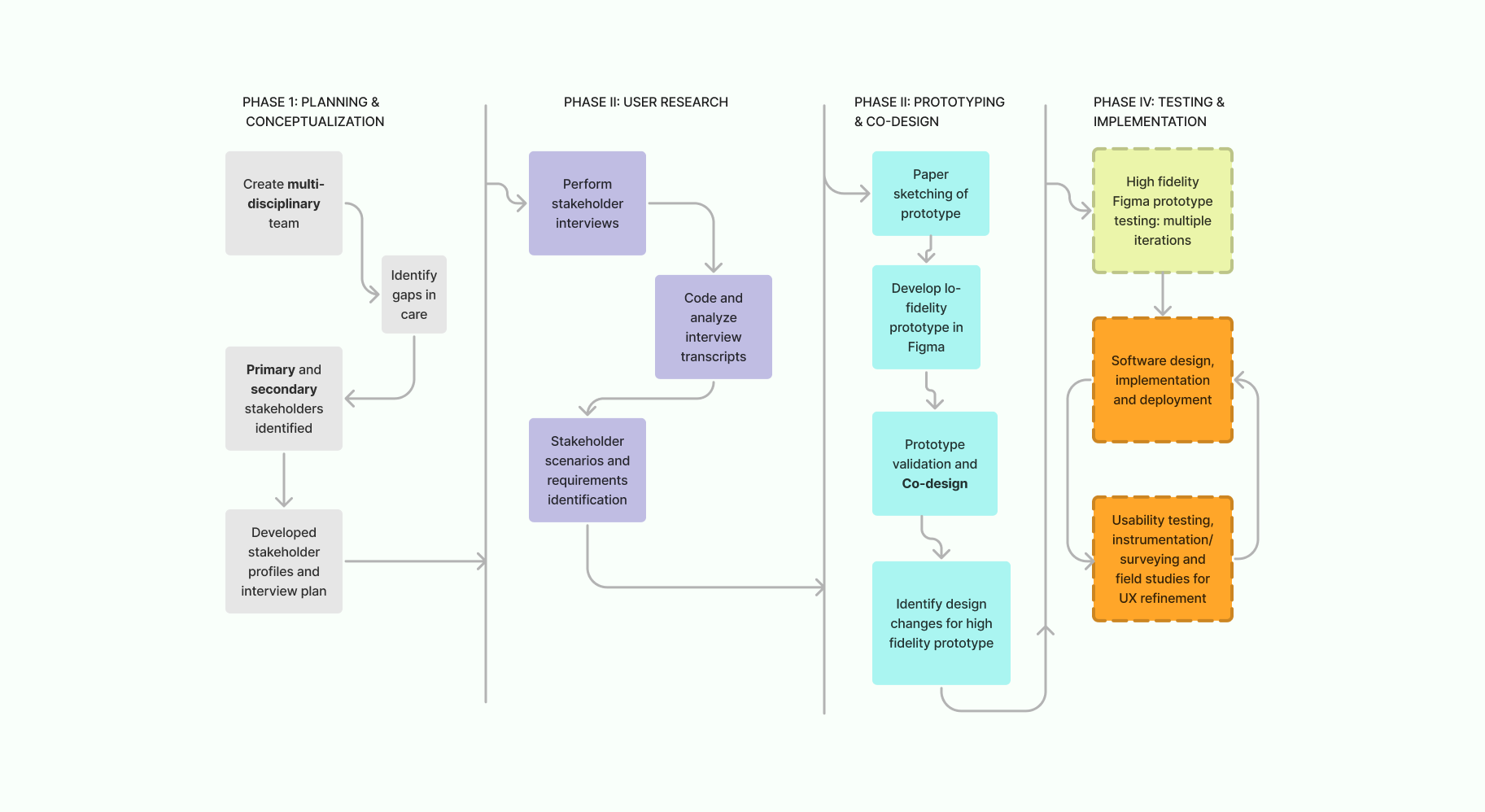
We conducted ethnographic interviews with patients, clinicians, and carers to understand the experience from pre-injury life to outpatient recovery.
Questions focused on how patients approached their own recovery as well as how external factors can affect recovery progress. These are a few of the research questions that guided our interviews:
- What does daily life look like in the days following discharge
- How do patients respond to obstacles and setbacks in recovery?
- What motivates patients throughout the recovery process?
Interview transcripts underwent several rounds of coding before moving into thematic analysis. From our analysis, we identified four themes:
Unclear path to recovery: Patients didn’t know what to expect during the recovery process. As a result, they were often alarmed by normal symptoms and/or ignored signs of infection and other complications.
Recovery task confusion: Patients often didn’t understand the purpose of recovery tasks, didn't feel confident they were doing them correctly, or would often forget to do them entirely.
Loss of motivation: Early on, patients feel that they are making little to no healing progress and would lose motivation to complete essential (but often painful) recovery tasks.
Value of a burn community: Patients have found that connecting with other burn survivors was integral to their recovery and reintegration into social life.
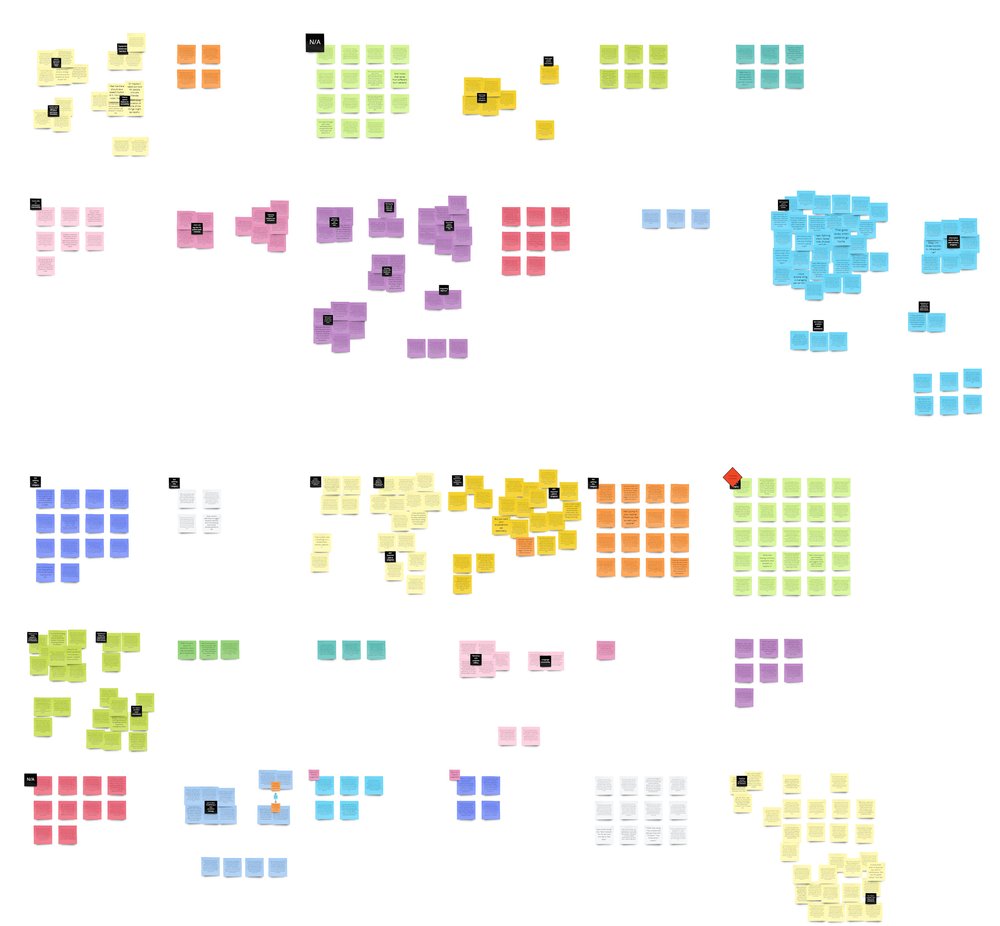
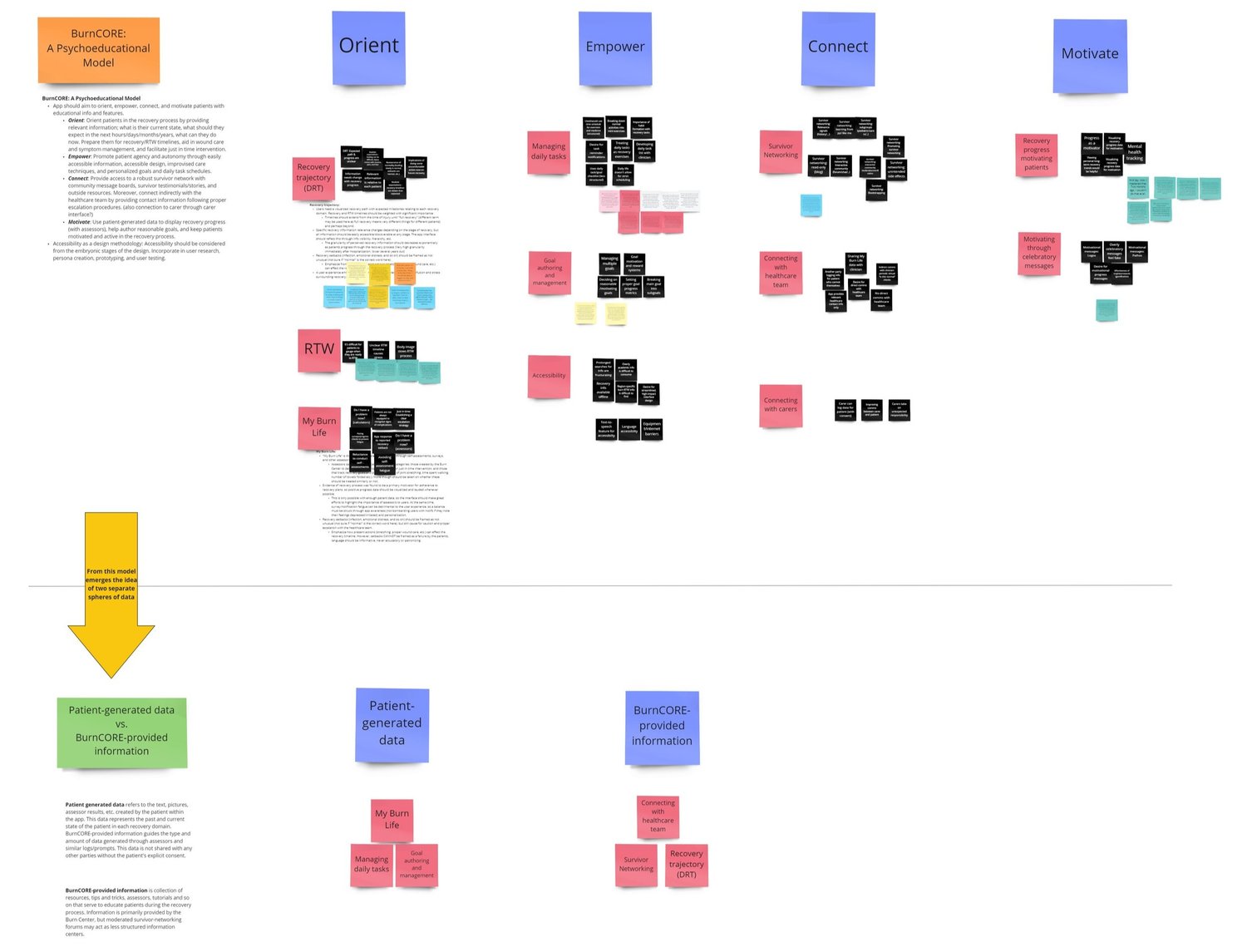
Users encountered vastly different challenges based on injury type and circumstances, initial hospital experience, race, and location.
I developed three personas with diverse injury severity, etiology, race and geography to explore how these challenges can intersect during recovery. User location required extra consideration as the Burn Center serves rural areas in Alaska, Idaho, and Montana, many of which have unreliable internet access and medical supply shortages.
One persona, Mandi, led us to realize that patients with injuries somewhere between minor and severe may gain the most value from BurnCORE. People with these injuries heal slower and face more unexpected symptoms than those with minor burns, but they also don’t have frequent contact with their clinician to quell their concerns like someone with severe burns.
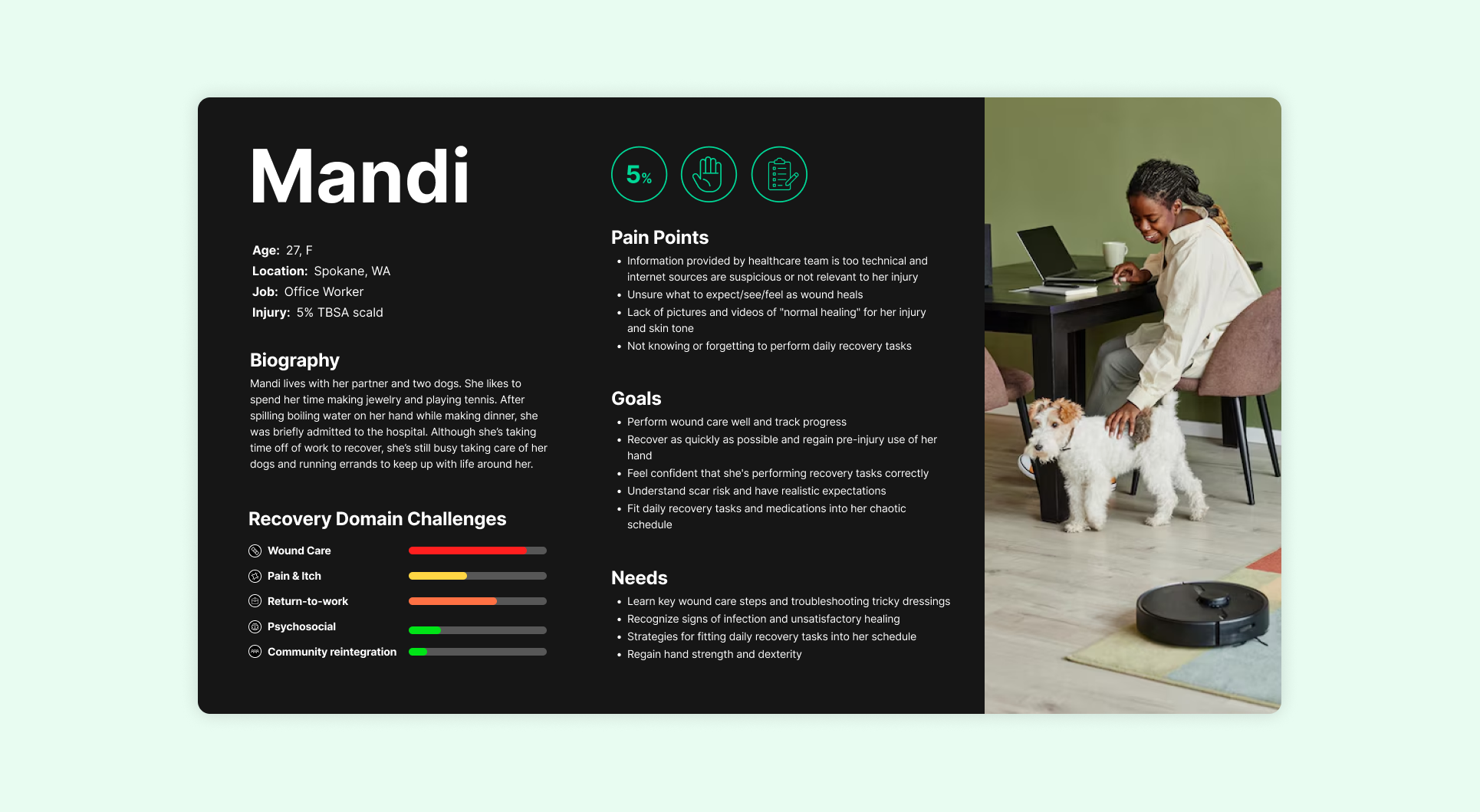
I mapped the experience from injury to outpatient recovery to further contextualize the pain points expressed in user interviews and identify opportunities for BurnCORE to intervene.
We found that BurnCORE would be most useful to patients upon hospital admission and the days immediately after discharge, times when patients feel the most anxious and unsure of what’s to come. During the inpatient stay, patients would benefit most from learning about general burn recovery to help them understand and adhere to their treatment plan. Following discharge, patients would need specific information about expected milestones for their injury and how to complete recovery tasks.
I had initially created the symptom timing and severity graph below just for the internal team, but we noted that such a visualization could be a potential solution for providing a clear path to recovery. We began to ideate recovery timeline visualizations for different injury archetypes that patients could use to understand expected symptoms and milestones for their specific injury.

We developed a conceptual model to inform our information architecture and map the interactions between stakeholders, services, and features.
While patients want to consume recovery information, they also want to produce and track their own recovery data through goal-authoring and progress tracking. Some patients wanted to share this data with their clinicians to receive real-time advice or shorten clinic visits, but others wanted to keep it to themselves and feel confident no one can access their data.
We concluded that BurnCORE should be completely independent from MyChart with no direct data exchange, but we should include a feature for patients to export recovery data and share it if they desire.

From our data synthesis, we established the four primary features that patients needed from BurnCORE.
- Recovery Timelines to visualize the recovery process and map recovery milestones
- Information Library to provide information about recovery domains and associated tasks
- Progress Tracking to visualize wound healing progress and boost motivation
- Community Network to connect with other with similar experiences
In a series of co-design sessions, I collaborated with patients to explore how the main features should look and feel through sketching and prototyping.
Patients made it clear that simplicity was key. They wanted to be able to clearly and immediately see what recovery tasks they had to do that day, with most sketches including some sort of checklist on the homepage. Many sketches also included some sort of recovery timeline with symptoms and milestones dotted along, validating our idea of a symptom graph similar to our journey map.
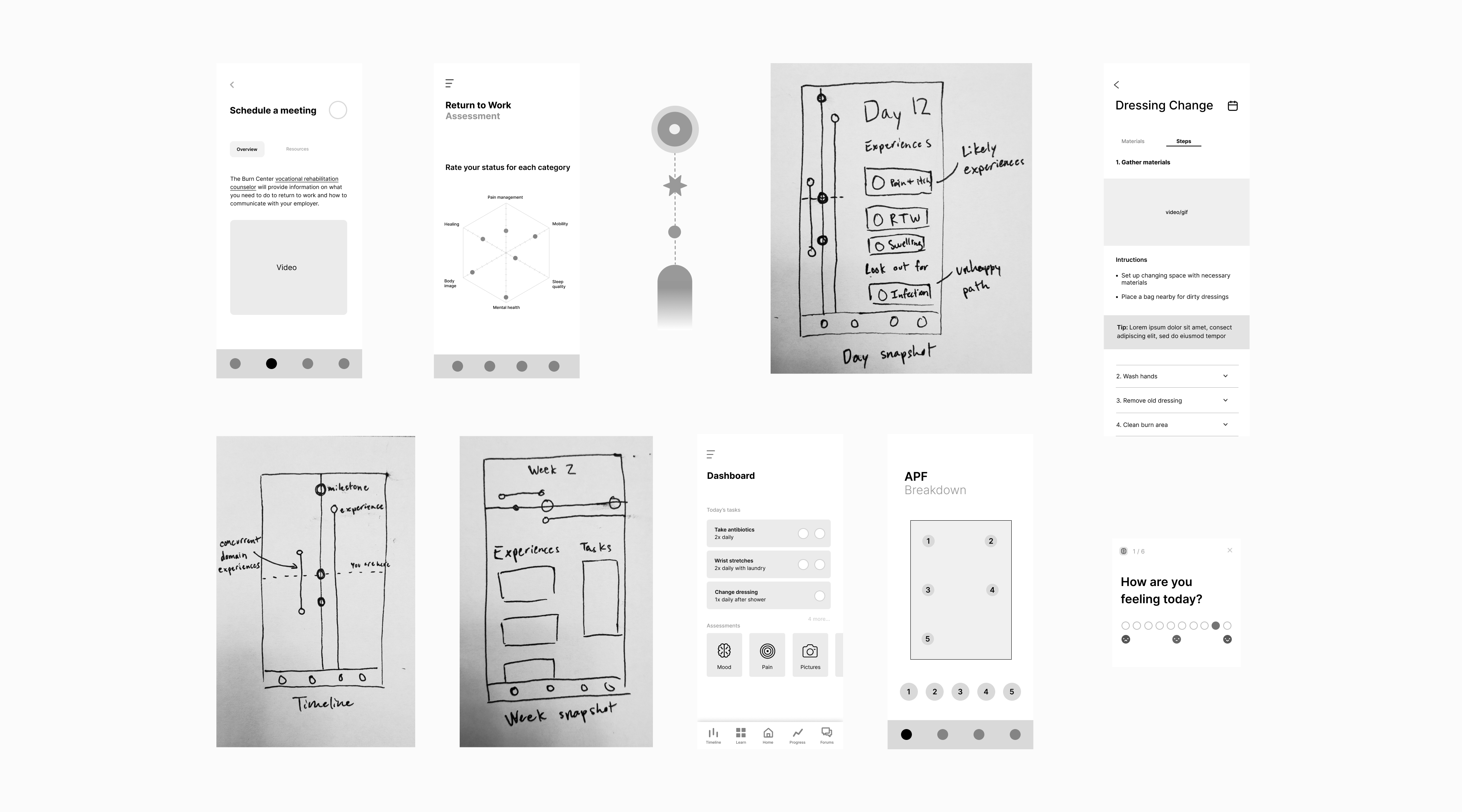
After compiling the co-design sketches and several rounds of iteration, I developed a high-fidelity prototype that incorporated findings from our user interviews, co-design sessions, and clinician feedback.
Homepage Dashboard
BurnCORE needs to arm patients with a wealth of information early on in their recovery, but we can expect engagement with education-oriented content to drop off as users recover. However, our research showed that patients want a tool to schedule and track daily tasks even when performance of tasks becomes second nature. The BurnCORE homepage allows users to view and track their daily recovery tasks and medication in one compact interface.

Recovery Timelines
Recovery Timelines help patients visualize and foresee symptoms and milestones in each recovery domain. The colored bars represent experiences within a domain, with length encodes the duration of the experience and the symbols dotted along represent recovery tasks and milestones. The ends of some experience bars “smear” to show that there is no concrete end date to an experience, but it should end in this timeframe; if not, patients are encouraged to contact their provider.
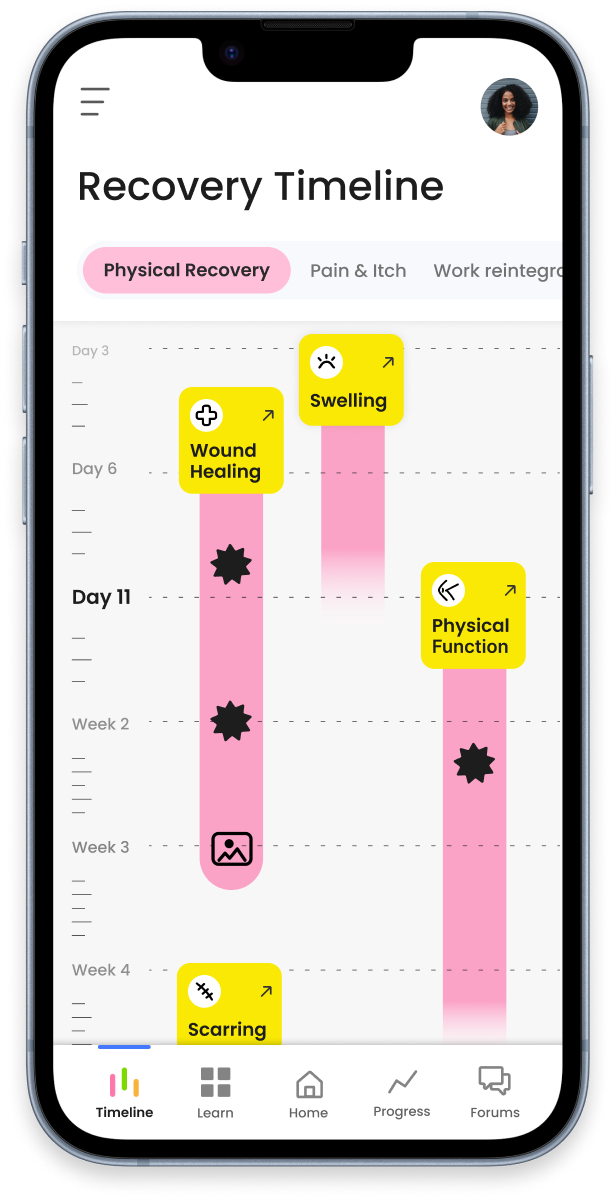
Stepwise Task Tutorials
Stepwise task tutorials ensure users feel confident they are performing wound care and other recovery tasks correctly. Clinicians are able to add video clips of themselves performing tasks for patients to reference.

Assessments and Progress Tracking
Patients can track recovery progress by taking regular, short assessments and seeing how their scores match people with similar injuries. If users are not progressing as expected or experiencing alarming symptoms, they will be encouraged to contact a clinician. Patients are also notified to take pictures at fixed intervals so they can visually track healing progress and maintain motivation.
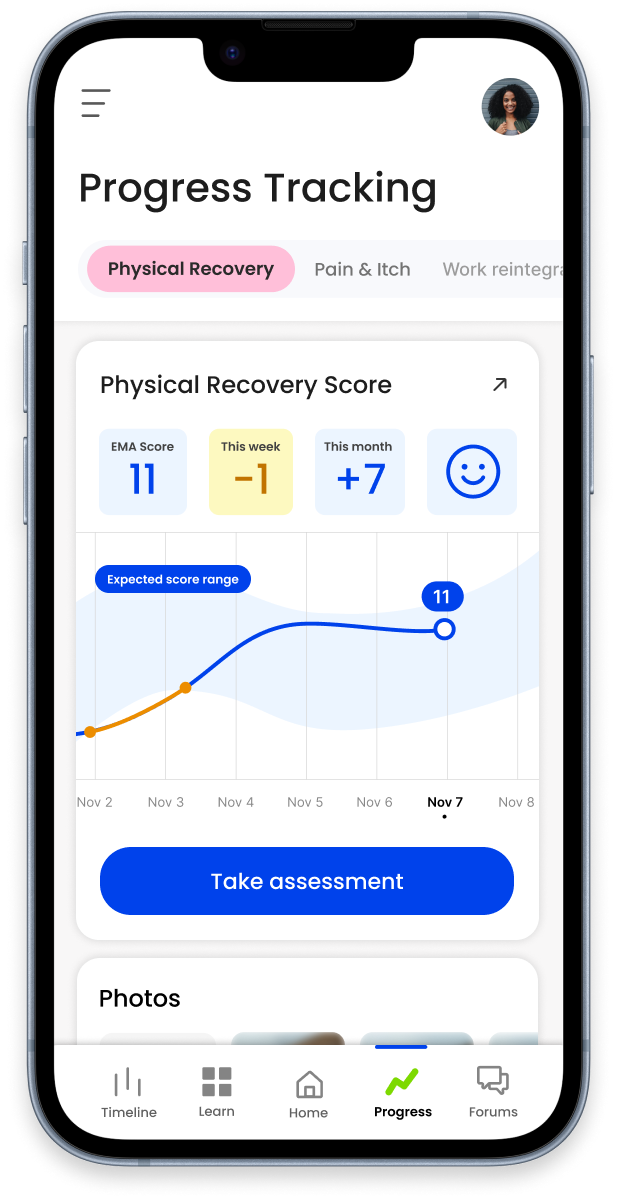
Survivorship Community
The community page features survivor testimonials, links to survivor forums, and FAQs to help users connect with other burn survivors. Because well-moderated burn survivor forums already exist, we opted not to implement in-app forums for this iteration. Future work will involve determining if in-app community forums would encourage connection than external forums.
